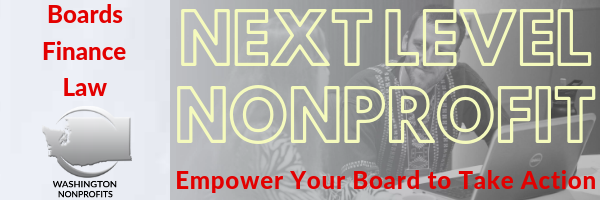
Second, watch this video
Let’s go a little deeper on Purpose Mapping. Watch this 2 minute video, and then use the worksheet on page 7 of the Boards in Gear toolkit to complete your Purpose Map.
Here’s a sample Purpose Map for the food bank example mentioned in the video.
Third, take Two Steps Forward
We invite you to take two steps forward from where you are now. Here are two topics to explore and bring back to your organization.
- Explore race and leadership. The “Race to Lead” study produced some interesting results. Download the summary or the full report and discuss the findings. This would make a great pair/share then full group conversation to give space for one-on-one discussion.
- Think about strategic planning. Board members are responsible for steering an organization forward. Washington Nonprofits’ “Strategic Planning in Nonprofits” series gives you a few tools to bring into your conversations.
Fourth, share what you’ve learned
Find the entire Boards in Gear curriculum, videos, kit, and key documents here. Invite fellow board members to watch the board development video so that they are ready to talk about board recruitment.
Have questions? Connect with your peers in the nonprofit sector through the Next Level Nonprofit LinkedIn group.

